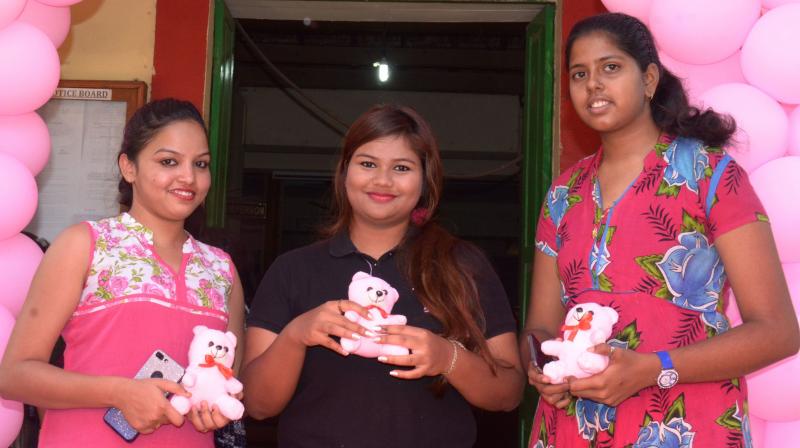Pink booths, teddy bears

In the recently held assembly elections in Punjab and Goa, only seven per cent of the candidates were women, but this dismal representation was washed out in the excitement about a large turn-out and the hullabaloo around the introduction of women-only pink polling booths.
When election commission officials in Goa shamelessly drawl about their “initiative” of giving pink teddy bears to early first-time women voters, and reel out statistics of how these all-women voting booths decorated with pink balloons polled two per cent more votes, we must realise that such token gestures are not empowering to women in any manner. Because they infantilise women, making it appear as if their motivation to vote is linked to a snugly soft toy.
Bribery is not new in electoral politics, but we now seem to be on a downward spiral where the State itself bribes us into democracy and citizenship, one tiny pink teddy bear at a time.
When questioned about the lack of a substantial number of female candidates, political parties take refuge in discussing viability and “winnability”.
Women are blamed for their absence at the grassroots level, for shying away from contesting elections, for not having sufficient money and muscle power.
In reality, women’s political participation is thwarted for the same reason that they are unable to enter the workforce, access the public sphere, travel alone or marry across caste and religious lines: misogyny, patriarchal violence and the lack of a safe environment.
This is why the women politicians we see are the ones who have been installed into leadership from the top — by virtue of being someone’s daughter, sister, wife, daughter-in-law, girlfriend, and so on. The outsider either has to merge into the political families, or she has to face a disgraceful exit having become a victim of character assassination. A reservation bill for women is no quick-fix either. We have seen the prevalence of dummy women candidates in panchayats turn the system into a total farce, the man ruling by proxy. A state like Punjab-with a skewed sex ratio and feudal codes is a tough battleground for a young woman who want change.
Less than a month ago, over three million women took part in the Women's March to protest Donald Trump’s election as President of the United States, and these public rallies spread to over 670 cities. In what is clearly not an isolated trend, what we are witnessing globally is the politicisation of young women, who having been relegated to the margins, are seeking to wrest control of their destinies instead of having the old boys club make decisions on their behalf.
The sight of these millions of women protesters induces hope. The day is not far off when women in India — especially dalit, adivasi women who bear the brunt of casteist, feudal, capitalist exploitation and State terror — will be taking to the streets en masse to agitate and demand their rights.
Such a process of mass resistance will inevitably ensure that every town puts forward a firebrand leader. On that day, we need not have columns such as this one, pondering why there are not enough female politicians. Instead, as writers, we can chronicle their incredible journeys to the pinnacles of power.
Meena Kandaswami is an author, poet and feminist activist whose work focuses on caste annihilation among other issues.

